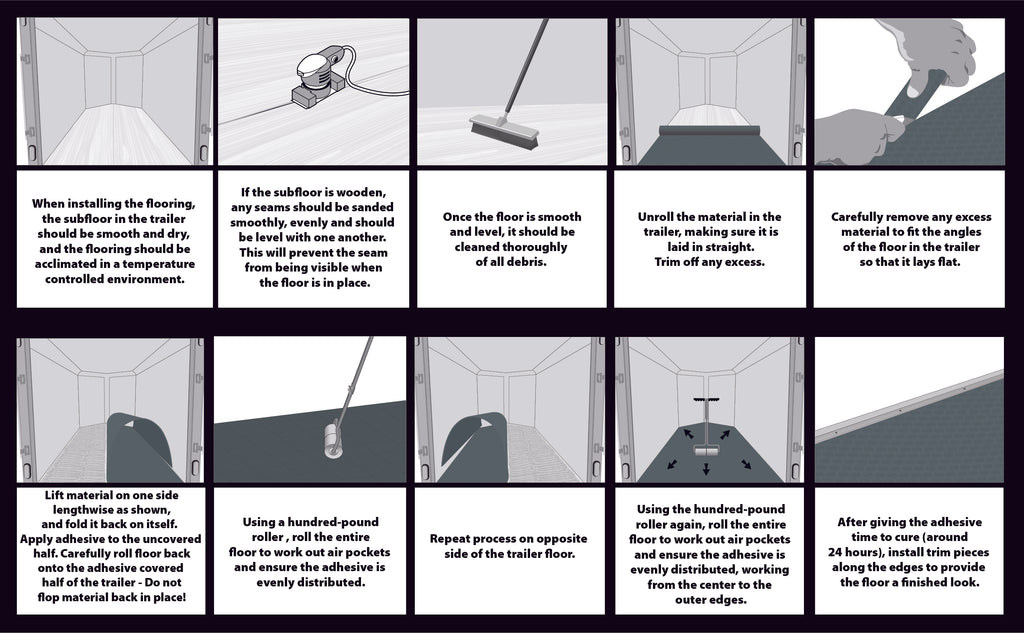This installation guide is intended to aid in the installation of G-Floor® Trailer Flooring. Due to a variety of factors, your specific installation may require additional guidance. In that case, please reach out to [email protected] and we would be happy to assist with your specific installation.
The following guide shows a basic installation in a trailer with a wood subfloor. Other subfloors, such as metal, may require special glue to ensure proper adhesion. We do not recommend installing the material without adhesive. Adhesive effectively negates expansion/contraction of vinyl during temperature changes.
In addition to this guide, always follow recommendations supplied on the adhesive or by the adhesive manufacturers.
Tools Required:
Sander
Broom
Utility Knife
Adhesive
Trowel/Nap Roller (as directed by adhesive manufacturer)
Trim/Seam Sealer
100 lb. roller
Preparation:
The substrate on which the flooring is going to be laid should be smooth, clean and dry. For wood subfloors, any seams should be sanded smooth, even and be level. This will prevent the seam from being visible when the flooring is installed.
The roll of flooring should be acclimated in a temperature-controlled area for 12-24 hours prior to being installed in the trailer.
Installation:
Unroll material in trailer – Make sure it is laid straight on the floor of the trailer.
Trim to fit the layout of the trailer – Carefully remove any excess material to fit the angles of the floor so the material is completely flat.
Lift material on one side lengthwise (from side to side, not front to back) and fold it in half back on itself – Expose the substrate so adhesive can be applied.
Apply adhesive to the uncovered half of the trailer floor – Apply adhesive in accordance with the manufacturers recommendations.
Carefully roll the floor back onto the adhesive – DO NOT flop material back in place! -The spun-bound backing helps the adhesive bond the flooring more securely to the substrate, but when set back into place haphazardly, it could lead to air trapped under the flooring, resulting in more work during the remaining steps of the installation.
Using a hundred pound roller, work any air pockets out and ensure the adhesive is evenly distributed - Work from the center of the floor out to the edge near the wall. This helps push out any trapped air and evenly spread adhesive under the material.
Repeat the above steps for the remaining half of the floor
Roll the entire floor once both sides are done to finish – Again, work from the center to the edges to remove any trapped air.
Allow adhesive to dry – It’s important to ensure recommended waiting period is followed to allow adhesive to fully cure.
Install trim pieces – along the flooring edges to give your new floor a finished look. Additionally, properly installed trim also prevents moisture from penetrating the edge.
Seal any exposed seams – Edges left without trim or any other exposed seams should be sealed with either vinyl seam sealer or heat weld.



